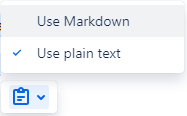-
ASP.NET Core 'Development' Environment confusion
ASP.NET Core has a useful feature for loading different configuration settings depending on which environment you’re running in.
One question that is worth considering though: When it refers to a ‘Development’ configuration, do you understand that is for your local development/debugging experience, or is it for some non-production deployment environment (Azure, AWS, or even specifically dedicated machines)?
If you’re not sure, or if there are differing opinions within your team then things can get confusing quickly!
One example to consider is connection strings to databases or blob storage.
- When developing locally these might resolve to localhost where you have SQL Server installed or a local Docker container running a storage emulator.
- When running in a deployment environment, they would point to existing resources. In Azure, they might be Azure SQL databases or Azure Storage accounts.
The Environment class defines three pre-defined fields - Development, Production and Staging. There are also three related extension methods to test if the current environment is one of these - IsDevelopment, IsProduction, and isStaging. These are the three environment names provided in the box, but you are free to use other names too.
It’s also quite common (even in Microsoft samples) to see code like this:
if (!app.Environment.IsDevelopment()) { app.UseExceptionHandler("/Error"); // The default HSTS value is 30 days. You may want to change this for production scenarios, see https://aka.ms/aspnetcore-hsts. app.UseHsts(); }Almost always these examples are for code that should only be executed in the local development environment - for example when you’re debugging the application.
So how do we avoid this confusion between local development and a development deployment environment?
Define a custom environment name for local development
You might settle on something like ‘localdev’ or ‘dev’ and update all your
launchSettings.jsonfiles to use that (if you use Visual Studio).The risk with this approach is if you ever have code that uses the
Environment.IsDevelopment()conditional, that will now return false. If you had code that should only run when you’re running/debugging locally you’ll need to use a different comparison. Also, watch out if you’re using 3rd party libraries that also include similar conditional logic and are making assumptions about whatIsDevelopment()means.Don’t use different environments for configuration
Avoids the problem entirely, but you might discover you’re missing out on being able to customise your local development experience.
Only use ‘Development’ for local development
This feels the safest to me. The default when you create a new ASP.NET project is that the
launchSettings.jsonfile setsASPNETCORE_ENVIRONMENTequal to ‘Development’ so you won’t need to change that.If there is a ‘dev’ deployment environment, you could create an
appsettings.dev.jsonto manage environment-specific configuration.Another (and possibly better) option is to manage environment-specific configuration via Infrastructure as Code. Bicep, Terraform, or similar, or in YAML or Sealed Secrets for Kubernetes. All of these result in environment variables being created that are visible by the ASP.NET application. Usefully, by default, the ASP.NET configuration builder loads environment variables after any
.jsonfiles, and the rule is that the last loaded wins. So anything set via these methods will override any configuration in theappsetting.jsonfile.My personal preference is to regard any instance of the application running in an environment outside of your local machine as ‘production’, such that if you do have conditional code using
Environment.IsProduction()that it will behave the same across all remote environments. My thinking here is unless it can’t be avoided, you don’t want to suddenly exercise a different code path in your ‘production’ environment to what you’ve been testing in your ‘test’, ‘qa’, ‘staging’ or even the shared ‘development’ environment.You will still have different configuration values for each of these environments. But reducing or eliminating conditional logic differences across these should improve reliability and consistency, and give you the confidence that your production environment will behave the same as your non-production environments did.
-
Docker run from an Azure Pipeline Container Job with a volume mount
This caught me out today. I was trying to run a Docker container directly from a script task, where the pipeline job was already running in a container (as a Container Job), similar to this:
- job: MyJob container: image: my-container-job-image:latest steps: - script: | docker run --mount type=bind,source="$(pwd)",target=/home/src --rm -w /home/src my-container:latestThe bit that was failing was the
--mount, with the following error message:docker: Error response from daemon: invalid mount config for type "bind": bind source path does not exist: /__w/3/s.Eventually, I realised the problem - By default, when a job is running as a Container Job, all the tasks are also running in the context of that container. So
$(pwd)was resolving to/__w/3/s. That happens to be the default directory, and also where your source code is mapped to (via a volume mount that you can see by viewing the output of the “Initialize containers” step).But when you invoke
docker run, Docker doesn’t try and run the new container inside the existing Container Job container, rather it will run alongside it! So any paths you pass to Docker need to be relative to the host machine, not relative to inside the container job.In my case, the solution was to add a
target: hostproperty to the script task, so that the entire script is now run in the context of the host, rather than the container. eg.- script: | docker run --mount type=bind,source="$(pwd)",target=/home/src --rm -w /home/src my-container:latest target: hostNow when the pipeline runs,
$(pwd)will resolve to/agent/_work/3/s(which is the actual directory on the host machine), and the mount will work correctly! -
Pasting Markdown into Confluence
This is one of those blog posts which is mainly for my benefit 😀.
To paste Markdown text into Atlassian Confluence wiki:
- Use Ctrl-Shift-V (to paste without formatting)
- Click on the Paste Options menu in Confluence and select Use Markdown (the default is)

If you prepared your Markdown in Visual Studio Code (as I often do), then the ‘paste without format’ is important as by default VS Code copies text with a ‘plain text/code’ formatting flavour, and this means you don’t get offered the paste options menu.